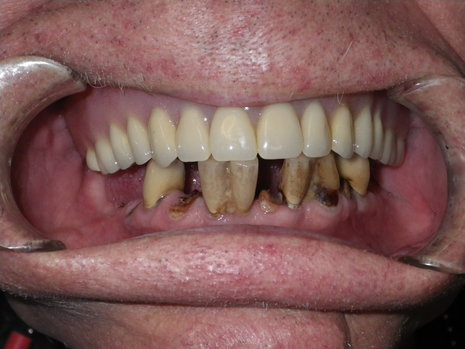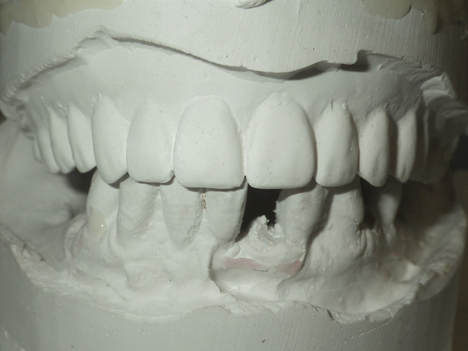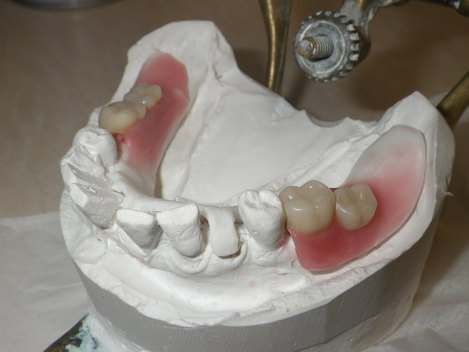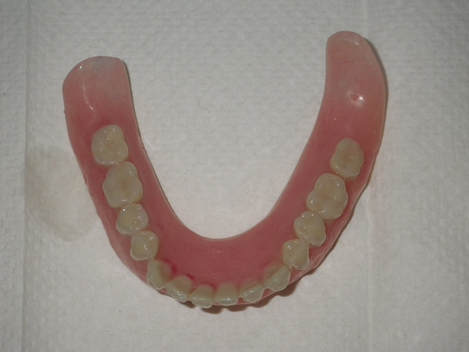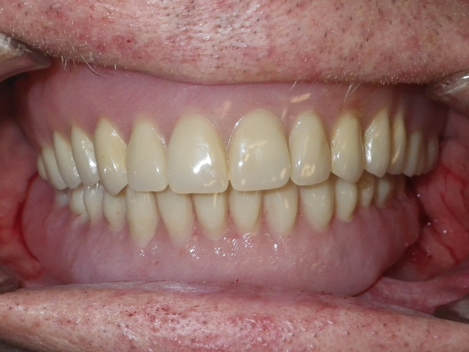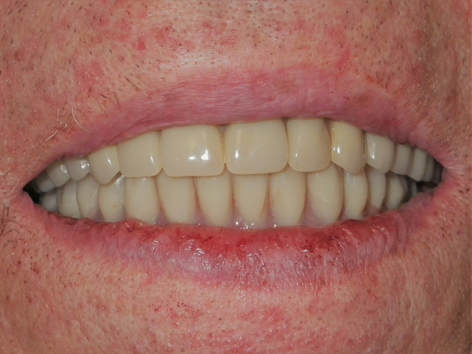|
What is an immediate denture? When a patient has many teeth that are non-restorable and require removal, this type of denture can be placed IMMEDIATELY after extraction of the teeth. This means that the patient will not have to leave the office with teeth missing. This is in contrast to removing teeth, waiting 4-6 months for bone healing and stabilization, followed by denture fabrication. Advantage: Your new teeth are ready on the day of surgery, and you may eat with it - simpler, smaller foods at first Disadvantage: The bone is healing underneath and is changing its anatomy following surgery, which may affect the fit of the denture over time. The patient above is an 81-year old with extensive history of smoking and poor hygiene. His lower teeth have been compromised by severe periodontitis (gum disease) and gross caries (cavities). He already has an upper complete denture. The prognosis of the lower teeth is deemed NON-RESTORABLE. Recommended treatment is full lower teeth extraction in conjunction with a lower immediate denture. Impressions of his upper and lower jaw were taken, which are sent to our dental laboratory. They then create stone models of his dentition. The lab creates a try-in denture, in which some of the teeth are set in wax and acrylic to try in the patient's mouth and confirm fit. This try-in denture fit the patient's upper teeth and his bite perfectly. After confirming the fit of the try-in denture, the lab removes all teeth on the stone model, which simulates the planned tooth removal. They set the REMAINING teeth onto the denture and fabricate the FINAL denture to be delivered on surgery day. Surgery day. After extracting all the non-restorable teeth, the lower immediate denture is immediately placed. This patient will leave our office with a full set of teeth! Post-operative instructions:
1. Sleep with the denture in place to compress the surgery site and help with healing/recovery 2. NO SMOKING FOR AT LEAST 3 DAYS - to prevent dry socket formation and reduce chance of infection 3. Eat soft, simple foods that are easy to consume, like soup or mashed vegetables 4. Sore, painful spots may develop, like a new pair of shoes that are too tight. Continue to use the denture so that a sore spot becomes visible; your dentist will now know exactly where to adjust the tight spot 5. It takes practice getting comfortable with your denture. Practice speaking and eating so your mouth and tongue can adjust Comments are closed.
|
AuthorDr. Mat and Dr. Jen will occasionally post cases or pictures from our office! Archives
August 2023
Categories |
Photo from Michael Dunn~!
